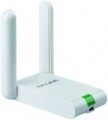The total number of antennas (of all types — see below) provided in the design of the device.
In modern Wi-Fi equipment, this indicator can be different: in addition to the simplest devices with 1 antenna, there are models where this number is
2,
3,
4 and even
more. The point of using multiple antennas is twofold. Firstly, if there are several external devices per antenna, they have to share the bandwidth among themselves, and the actual communication speed for each subscriber drops accordingly. Secondly, such a design may also be required when communicating with one external device — to work with MU-MIMO technology (see below), which allows you to fully realize the capabilities of modern Wi-Fi standards.
Anyway, more antennas, usually, means a more advanced and functional device. On the other hand, this parameter significantly affects the cost; so specifically looking for equipment with numerous antennas makes sense mainly when the speed and stability of communication are critical.
Note that antennas intended for mobile communications may also be considered in this clause. So when choosing a model with support for mobile networks, it's ok to clarify this point.
The presence
of a removable antenna(or several antennas) in the design of the device.
Only external antennas can be made removable (see "Type of antennas"). This design is especially convenient for storage and transportation: it allows you to remove external equipment, making the device less bulky. In addition, many devices with this feature allow replacement of standard antennas with others (for example, more powerful ones or with a more optimal radiation pattern). Some of these models are even initially sold without antennas — in the expectation that the user will choose them himself, at his discretion; such equipment is not needed for domestic use, but it can be very convenient when selecting high-quality professional equipment. On the other hand, the detachable design reduces the reliability of the antenna mounting, increases the possibility of failures at the connection point, and increases the cost of the device. Therefore, most modern Wi-Fi equipment is still equipped with
fixed antennas.
The total number of antennas in the router that are responsible for communication in the 2.4 GHz band. For details about the number of antennas, see "Total antennas", about the range — "Frequency range".

